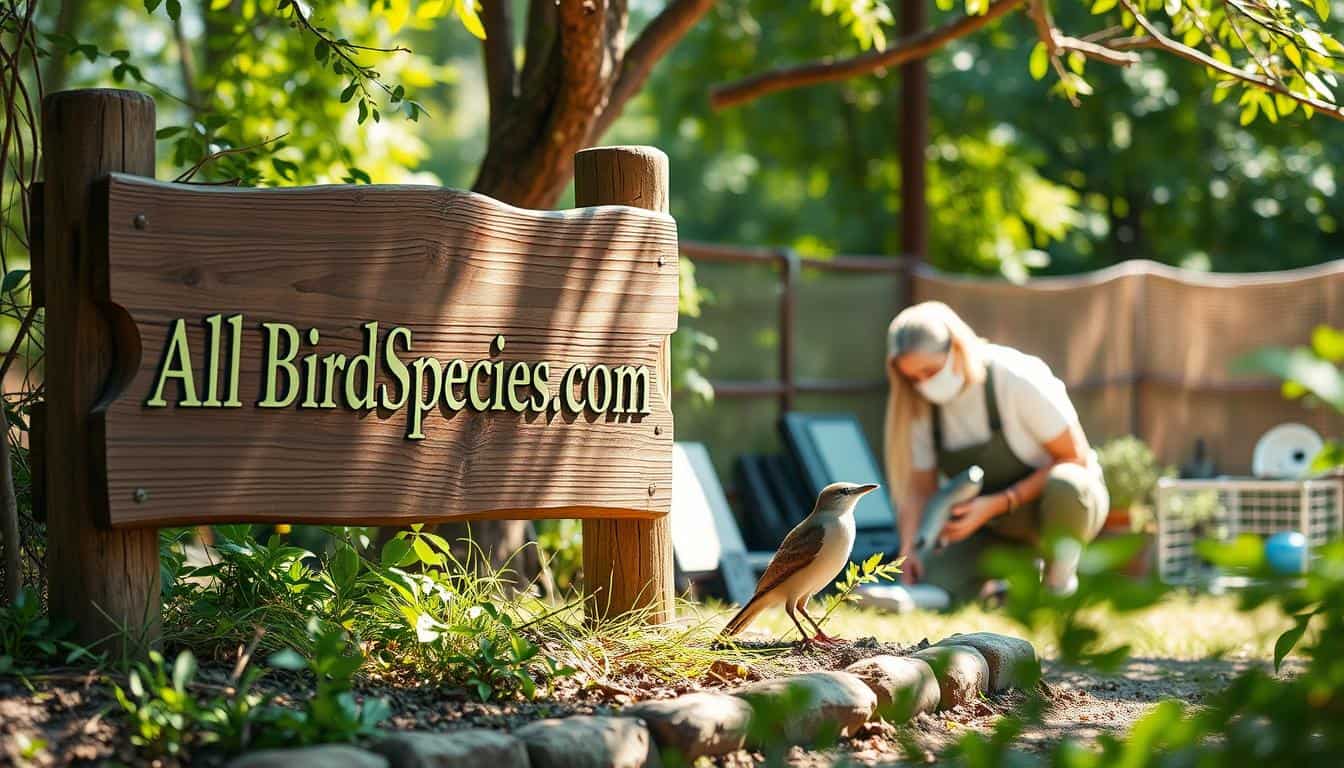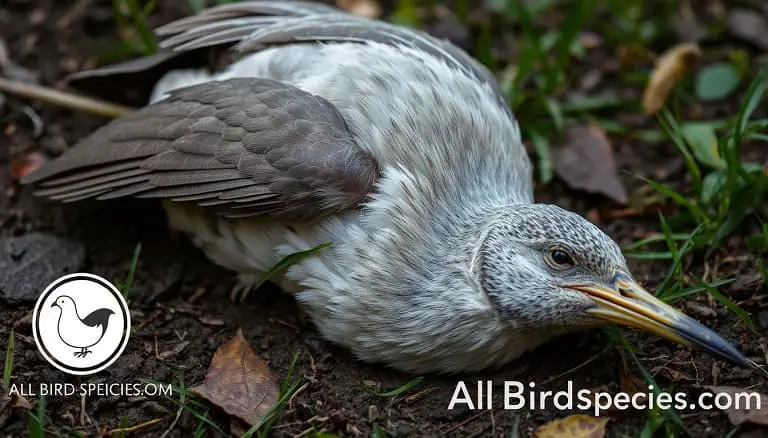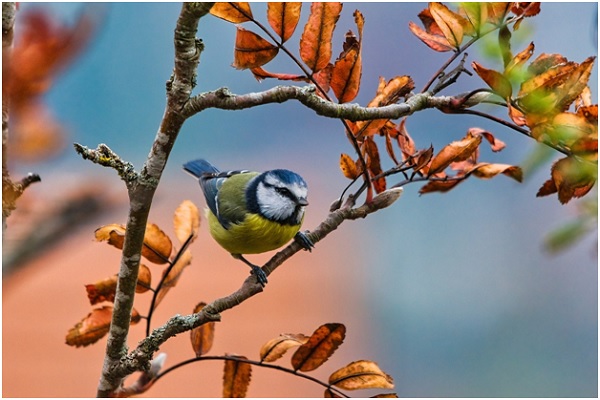How to Tell If a Bird is Dead: Signs and Steps
This article will teach you how to Tell If a Bird is Dead. You’ll learn how to care for sick birds and what to do if you find a dying or dead bird. Bird lovers need to know these signs. Did you know that about 80% of birds hide illness signs until it’s too late? This fact shows how important it is for bird owners and fans to know when a bird might be dead. Spotting bird death signs is key, as some birds hide their sickness well. If you have a pet bird or find a wild one in trouble, knowing how to spot a dead bird can help save its life.
Key Takeaways
- Knowing how to tell if a bird is dead is essential for bird owners.
- Birds can easily conceal their illnesses, making observation critical.
- Recognizing the signs of a dead bird helps facilitate prompt action.
- Caring for sick birds requires understanding their behavior and health.
- Immediate recognition of distress can ensure better outcomes for the bird.
Understanding Bird Behavior and Health
Birds are very sensitive and smart. Their actions tell us a lot about their health. By taking good care of them, we can spot health problems early. Regularly watching birds helps us know what’s normal for them.
It’s key to notice small changes in their actions. For example, a bird that loves to be around people might start to hide. This could mean it’s not feeling well. Birds often hide their sickness to stay safe, so we must watch them closely.
If you feel something is off with your bird, trust your gut. Birds can get sick fast, so seeing a vet quickly is important. Knowing how birds act and what health signs to look for helps us take the best care of them.
| Behavior | Potential Health Sign |
|---|---|
| Withdrawal from social interaction | Possible illness or stress |
| Changes in vocalization patterns | Health issues or discomfort |
| Excessive preening | Skin problems or stress |
| Increased aggression | Pain or environmental stressors |
Common Signs of a Dying Bird
It’s important for bird owners to know the signs of a dying bird. Spotting these signs early can help you act fast. Look out for symptoms that show serious health issues.
Extreme Weakness and Tiredness
See if your bird is getting very tired or stays at the cage’s bottom a lot. This could mean it’s dying. Birds that can’t perch are very weak. Watching them closely can tell you how they’re doing.
Loss of Appetite and Weight
Loss of appetite in birds is a big worry. Not eating much can make them lose weight fast, which is bad for their health. If your bird won’t eat for a while, you need to act fast.
Labored Breathing Symptoms
Birds have trouble breathing if they breathe with their mouths open or move their tails a lot when they breathe. These are signs they’re having trouble breathing and need a vet right away. Don’t ignore any breathing problems.
How to Identify If a Bird is Dead
Identifying dead birds takes careful attention to their physical signs. Look for signs of rigor mortis, which starts fast, usually in minutes after death. Check if the bird’s legs don’t move when you gently prod them. This is a sign it’s dead.
Also, check the bird’s body temperature. Healthy birds keep a temperature of about 105 degrees Fahrenheit. If the bird feels cold, it might be dead.
Checking for Rigor Mortis
Rigor mortis makes the bird’s muscles stiff after death. This happens quickly, so it’s a key sign to spot a dead bird. Be gentle when checking to avoid hurting a living bird.
Observing Body Temperature
Checking the bird’s body temperature can tell you if it’s alive or dead. Touch the bird’s abdomen to feel its temperature. If it feels cold, it’s likely dead. This method helps you know if the bird is alive or not.
What to Do If You Find a Dying Bird
Seeing a dying bird can be upsetting. But, it’s important to act calmly and carefully. Create a peaceful space and help with the bird’s water needs to comfort and support it.
Creating a Calm Environment
When you find a sick bird, making a quiet place is key. Pick a spot with little noise. Cover the cage with a soft cloth to make the bird feel safe.
Your goal is to care for the dying bird without making it stressed. This lets the bird relax and try to get better.
Ensuring Hydration
Keeping a bird hydrated is very important, especially if it’s weak. If the bird can’t drink by itself, use a dropper or syringe. But, don’t force water into its beak to avoid choking.
Try to calm the sick bird while giving it fluids. Hold the bird gently and keep it warm. This can help it recover better.
How to Tell If a Bird is Dead
Knowing how to spot signs of a dead bird is key. Look for no response to sounds or touch, especially if the legs don’t move when you try to move them. This is a main way to check if a bird has died.
Other signs include:
- Rigor mortis, which makes the bird’s body stiff.
- A drop in body temperature, showing the bird has died.
- No movement, even when you try to wake it up.
It’s important to look for these signs closely. They help you understand the bird’s condition better. When you see these signs, you can tell if the bird is dead.
Keeping Your Bird Comfortable
Making sure your bird feels comfortable when they’re not well is key. It’s important to make their space calm and soothing. By paying attention to their needs, you can help reduce their stress.
Reducing Stress Triggers
A safe and quiet place is key for a bird getting better. Stress triggers can make them worse. Here are ways to lessen these triggers:
- Keep the area quiet, avoiding loud noises and sudden moves.
- Have fewer visitors to keep the space calm.
- Play calming music softly in the background for your bird.
Providing Warmth and Comfort
Keeping sick birds warm is crucial since they can’t keep themselves warm. Here are some ways to keep them cozy:
- Use a heat lamp safely away from your bird to keep them warm.
- Wrap your bird in a soft, breathable blanket for extra warmth.
- Check the temperature to keep it just right for your bird.
Steps for Caring for an Injured Bird
When you find an injured bird, act fast. First, make sure it’s safe from more harm. Approach the bird slowly and carefully, so you don’t scare it. Use a soft cloth or towel to pick it up, supporting its body for comfort.
Then, make a warm and safe place for the bird. Put it in a small box with soft towels or paper inside. Make sure the box has holes for air and is quiet, away from pets and loud sounds.
Look for any injuries on the bird but don’t try to fix them yourself. Most birds need a vet or wildlife rehabber. Call a local wildlife center or vet for help.
While you wait for help, keep the bird still to avoid more injury. Don’t feed or give water without advice, as it could hurt the bird. Always ask experts for help with bird first aid.
- Ensure safety for you and the bird.
- Pick up the bird gently with a soft cloth.
- Give it a cozy space with soft bedding.
- Keep the bird’s environment calm.
- Call wildlife services or a vet.
| Step | Description |
|---|---|
| 1. Secure the Bird | Pick up the bird gently with a soft cloth. |
| 2. Create a Safe Space | Put the bird in a lined box in a quiet place. |
| 3. Observe for Injuries | Look for injuries but don’t treat them yourself. |
| 4. Contact Professionals | Call a wildlife center or vet for help. |
| 5. Limit Movement | Keep the bird still until help comes. |
How to Assess a Baby Bird’s Condition
When you find a baby bird, it’s important to check its condition fast. Knowing the difference between nestlings and fledglings helps with baby bird care. This knowledge helps you help the bird the best way.
Distinguishing Between Nestlings and Fledglings
Nestlings don’t have many feathers and are very vulnerable. Fledglings have more feathers and can move a little. Knowing this helps you see how much help the bird needs.
Signs of Distress in Young Birds
Look for signs of distress in young birds. These signs include:
- Visible injuries, such as cuts, bruises, or swelling
- Extreme weakness or inability to move
- Fluffed feathers, indicating the bird may be cold or scared
- Excessive calling, which can signal distress
It’s key to help the young bird right away. Make sure it’s warm, has water, and a safe place. Your quick actions can really help its survival chances.
Contacting Wildlife Rehabilitation Services
If you find a sick or injured wild bird, it’s important to get help fast. Wildlife rehab centers have experts who can treat the bird. Quick action can really help the bird survive.
Before you call, watch the bird and note its condition. This info helps the rehab center understand what the bird needs.
Bird rescue services are key to helping sick wildlife. They teach the public how to help animals in trouble. The Humane Society lists local wildlife agencies to find bird rehab centers. These places have trained staff ready to help.

Here are steps to follow when contacting wildlife rehabilitation services:
- Check if the bird really needs help.
- Find the closest wildlife rehab center using local listings or agency contacts.
- Call first to get advice on safely moving the bird.
- Tell the rehab center all about the bird’s condition.
- Do what the experts tell you to do next.
Remember these steps to make sure the bird gets the care it needs. Helping birds helps the whole ecosystem. Just taking that first step to get help can change a bird’s life.
Handling Dead Wild Birds Safely
It’s important to handle dead wild birds safely. Many birds carry diseases that can affect humans, like avian influenza. Here are steps for safe handling:
- Always wear disposable gloves when handling a dead bird.
- Use a sturdy plastic bag to enclose the bird. Double-bagging is recommended to minimize exposure.
- Seal the bags securely to prevent any leakage.
- Dispose of the carcass in accordance with local regulations regarding bird death disposal.
Also, take steps to prevent bird diseases. If you find a dead bird, call your local wildlife agency. This helps with disease tracking and control.
By doing this, you keep yourself and others safe from health risks from dead birds. Always be careful and put safety first when dealing with wildlife.
Conclusion
Learning how to tell if a bird is dead helps you help them when they are in trouble. This guide shows why knowing about bird health is key. It teaches you to act fast if a bird seems sick or weak.
You now know how to make a safe place for sick birds and get help from experts. Taking good care of a distressed bird helps them feel better and live longer.
Your actions show how much we care about birds and the natural world. By learning and sharing what you know, you and your family can help protect these amazing creatures. This ensures they get the care they need when they are sick or hurt.







